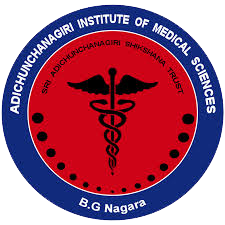Introduction
Competency-based medical education is intended to gauge the cognitive, psychomotor, and affective domains required for competency in a given space. Assessment of practical skills has shaped a key piece of clinical instruction for several years.[1]
The term objective structured practical examination (OSPE) is gotten from the goal, objective structured clinical examination which was started in 1975 and later modified by Harden and Gleeson in 1979.[2,3] It is utilized to survey the competency, which depends on target testing through direct perception.
The traditional practical examination (TPE) technique for the evaluation of down to earth abilities raises worries about examiner fluctuation, normalization, and consistency of evaluation. In the traditional technique, the practical skills are not directly observed, however are surveyed depend on questions solicited toward the end of the session. There is, in this way, a need of an organized methodology for the evaluation of down to earth aptitudes to give methodologies that workforce can use to upgrade expertise execution and increment preparing proficiency.[4]
Medical education is as of now experiencing broad reevaluation with center instructive goals being characterized. It was felt that a solitary assessment did not satisfy all the elements of assessment, for example, surveying information, perception, practical skills, and feedback from the students.[5] Newer evaluation techniques have thusly been concocted to address these issues, one of which is OSPE.
Evaluation of medical students has consistently stayed a subject of discussion. Learner’s evaluation is regularly depicted as “the smaller part that manipulates everything else” of medical education. It is viewed as the single most grounded determinant of what medical students really realize (instead of what they are instructed) and is viewed as extraordinarily amazing as an apparatus for controlling the entire training process.[6] There are consistent endeavors to make appraisal more goals and dependable as opposed to emotional. Conventional techniques such as paper/exposition type questions, which experience the ill effects of absence of objectivity, are offering an approach to more up to date target strategies for appraising as various decision questions, short answer questions, and such different apparatuses, for the evaluation of cognitive domain.[7] As far as abilities appraisal is concerned, the ordinary techniques are emotional in nature, yet in addition need scope of direct perception of the presentation of skills by the observer. In any case, in India, larger part of medical colleges despite everything follows the traditional strategy for evaluation. In our medical college likewise, the evaluation of practical skills is done by conventional techniques, according to the instruction from the university. Consequently, this study was intended to assess OSPE as a tool for term finishing evaluation of practical skills in the undergraduate medical students.
Aims and objectives
The objectives of the study were as follows:
- To study the OSPE as a tool of formative assessment of undergraduate medical students
- Comparison of TPE with OSPE
- Analysis of student’s opinion regarding OSPE model of Gram stain.
Materials and Methods
Type of study
This was a prospective study.
Place of study
This study was conducted at Microbiology Laboratory, Department of Microbiology, N.C. Medical College and Hospital, Israna, Panipat.
Period of study
This study was from June 2018 to December 2018.
Participants
MBBS students from the second professional year.
Inclusion criteria
All second professional year MBBS students who were agreeing for participation and gave their consent were included in the study.
Exclusion criteria
Students who were not agreeing for participation and not gave their consent were excluded from the study.
The practical skills of undergraduate medical students were evaluated during their performing of Gram stain. Gram stain was selected as the exercise because it is quick, simple and forms the basis of microscopic diagnosis in majority of infectious diseases.
Complete instructions were given to students in regard to the example of assessment and the course to be secured. Students (n = 70) were according to their college roll number randomly divided into two group of 35 students each. Group 1 was assessed by TPE; however, Group 2 was evaluated by OSPE tool.
Four OSPE stations were framed of which two stations for the assessment of psychomotor domain and remaining two stations for the assessment of cognitive domain. Scores for different steps in test were chosen and checklist for scoring arranged. Questionnaire for the examination and answers normalized were readied and students were advised to OSPE model in previous practical classes. Students were assessed utilizing OSPE model and their opinion regarding the new tool was obtained by given them a questionnaire and then their opinions were examined.
Care was taken to have things that were comparative as far as targets to be evaluated as additionally the trouble level, for both the arrangements of stations [Table 1]. For the OSPE station testing psychomotor domain of students, each point on the checklist was scored by the equal system, that is, the “Yes/ No” scale, by the observer, and marks were given as needs be [Tables 2 and 3].
After the finishing of the assessment, student’s opinion was collected by given pre-validated questionnaire. Questions relating to the student’s opinion in regard to OSPE compared with TPE, the challenges they confronted, and their feelings seeing incorporation of OSPE as an evaluation strategy in their practical were incorporated.
Statistical analysis
The data collected from the students were analyzed using unpaired t-test to compare the student’s marks score in TPE and OSPE. P < 0.05 was considered statistically significant.
RESULTS
In this study, a total of 70 undergraduate medical students were included for participation. The sex- wise differences in scores were not statistically significant. There were significant differences observed in the mean of the scores between the TPE and OSPE (P < 0.05); the standard deviation of scores for Group-2 (OSPE group) showed significance difference.
Out of 70 students who took both the tests, and given their feedback questionnaire, 90% felt that they were time given at each station adequate, 71.43 rated OSPE easier than TPE, 78.57% responded that the examination was not stressful, 87.14% said that the OSPE very much organized, applicable, and uniform, 78.57% said that the examination covers the appropriate knowledge than traditional examination, 94.29% opined that such type of examinations should be included in the future as a method of assessment in practicals in formative assessments and 70% agreed that the OSPE is objective (unbiased) [Table 4 and Graph 1].
Discussion
Assessment is a procedure which deliberately and equitably decides the significance, adequacy, and effect of exercises considering their goals. Along these lines, assessment ought to incorporate cognitive, psychomotor, and affective domains.[4] In customary strategies for assessment, there are numerous inadequacies.
Aside from execution of students, different components such as trial factors, instrument condition, and examiner factors additionally assume a huge role in scoring. Furthermore, singular aptitudes are not assessed and just conclusive outcome is thought about in granting the imprints prompting inadequate and unjustifiable assessment. Most students are surveyed distinctly for cognitive domain and not for psychomotor and affective domain.[4,8]
So as to defeat these drawbacks of traditional technique for assessment, new models have been proposed endeavoring to expel these inclinations. The most encouraging technique among them is the target organized handy assessment (OSPE) depicted in 1975 by Harden et al. In OSPE, a few stations are made and at each station, the students play out the skill.[4]
OSPE is valuable for any subject and the principle advantage of OSPE is that both the assessment procedure and the examinee are assessed by offering significance to the individual capabilities. There is objectivity in OSPE and the standard to check the skills is made before and concurred check records are utilized for marking and assessment.[9] This assessment evacuates the inconstancy of experiments and examiners for a group of students or a class examining a similar subject and along these lines it improves the legitimacy of test. OSPE gives incorporation of educating and assessment. Students take more enthusiasm because of assortment and keep themselves alert during the entire procedure of assessment, which is not found in traditional one.[10]
In our study, we tried to assess the opinions submitted by the students during the internal practical examination as formative assessment for the second professional year MBBS students performing Gram stain exercise.
The OSPE has been upheld for the functional evaluation of preclinical and paraclinical subjects, including microbiology. An endeavor was made to test the possibility and agreeableness of executing this technique in the inward appraisal by contrasting it and TPE and furthermore by getting the student’s opinion. In our study, a total of 70 undergraduate medical students were included for participation. The sex- wise differences in scores were not statistically significant. There was a statistically significant difference in the mean scores between the TPE and OSPE (P < 0.05); the standard deviation of scores for Group-2 (OSPE group) also showed significance difference. Similar studies were reported by Nigam and Mahawar,[11] Vijaya and Alan,[12] KL Bairy et al.,[13] Malhotra et al.,[14] and Mokkapati et al..[9]
Out of 70 students who took both the tests, and given their feedback questionnaire, 90% felt that they were time given at each station adequate, 71.43 rated OSPE easier than TPE, 78.57% responded that the examination was not stressful, 87.14% said that the OSPE very much organized, applicable, and uniform, 78.57% said that the examination covers the appropriate knowledge than traditional examination, 94.29% opined that such type of examinations should be included in the future as a method of assessment in practicals informative assessments and 70% agreed that the OSPE is objective (unbiased) [Table 4 and Graph 1]. Similar study was reported by Manjula et al., 81% of their students felt OSPE as a fairer tool of examination in practical exercises and 62% of students perceived it as well structured.[15] They also reported that 36% of their students perceived OSPE to be less stressful, 55% felt that it was more useful than traditional examination, 42% opined that OSPE reduced the chances of failing, and 72% felt that it highlighted their areas of weakness. In a similar study by Faldessai et al., 90% of their student participants opined that OSPE was a better examination pattern than traditional examination and it was better structured and uniform. About 88% of students in their study opined that OSPE assessed the relevant practical skills and 80% opined that it covered the appropriate knowledge area consistent with the learning objectives. About 50% of students in their study said that OSPE was less stressful, and 78% opined that this pattern of examination was helpful in bringing out their areas of weakness.[16]
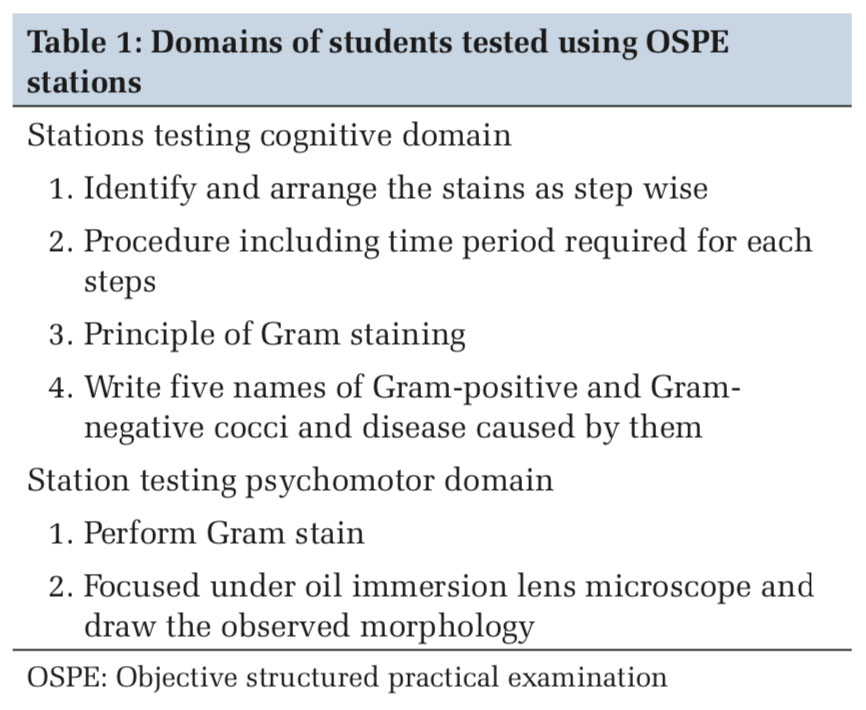
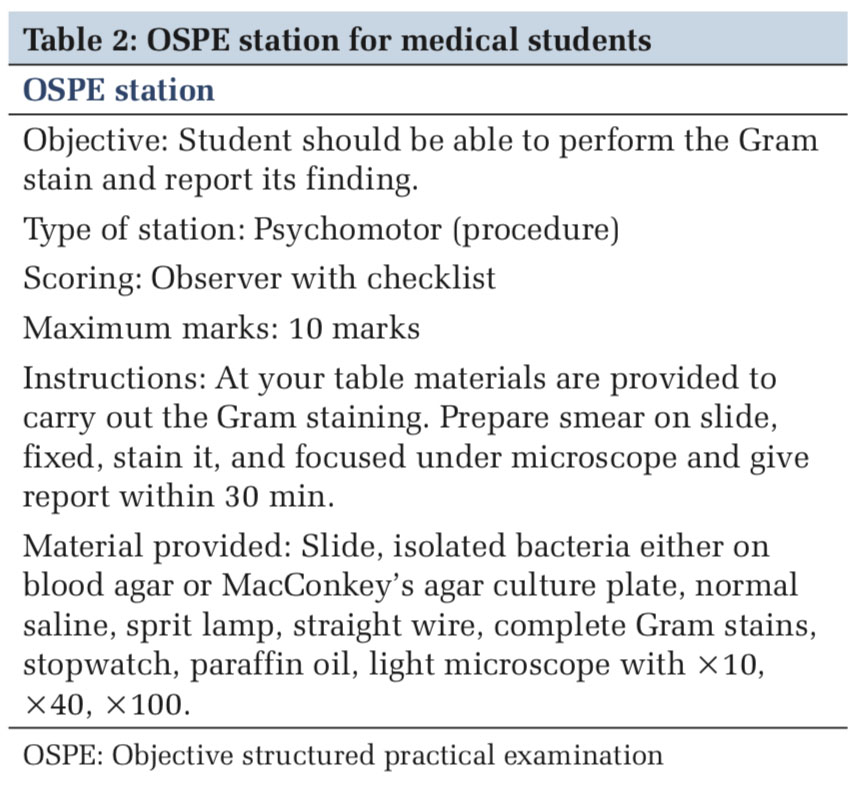
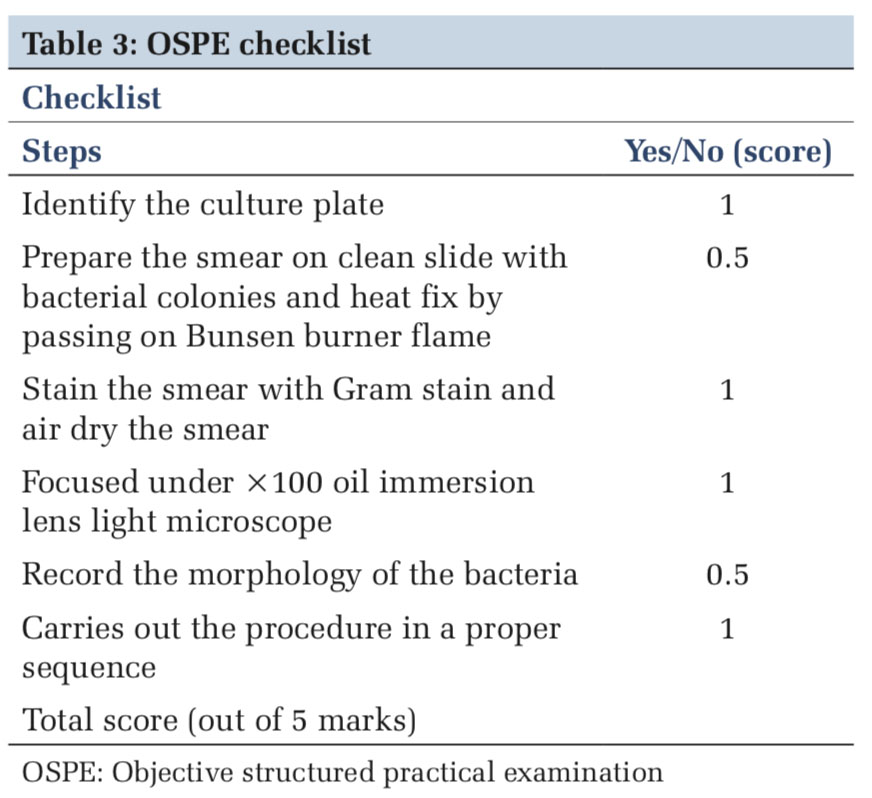

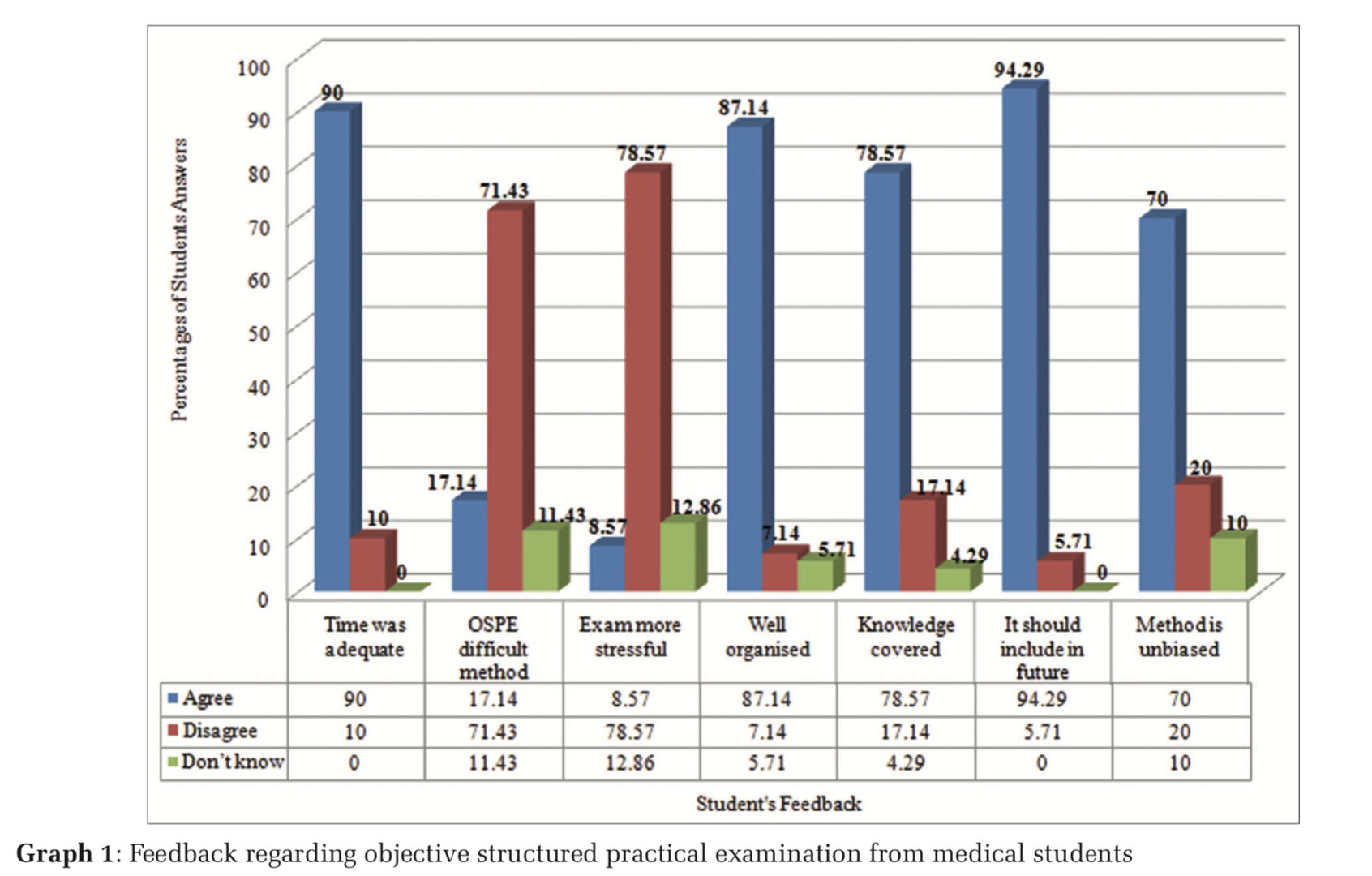
|
